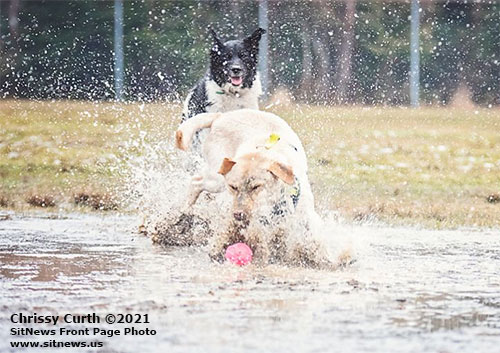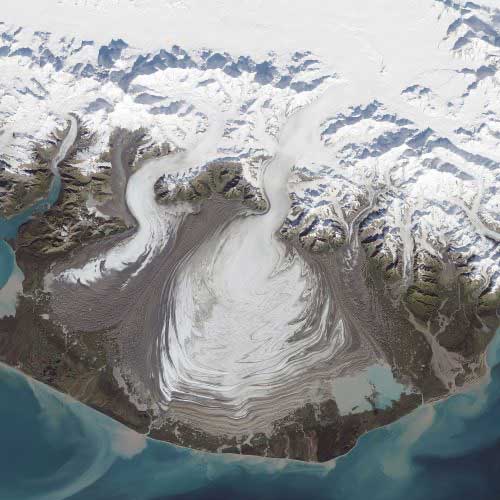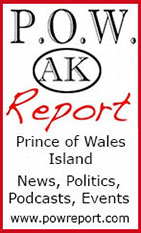









 Contact Contact 
 Webmail
Letters Webmail
Letters
 News Tips News Tips
 Copyright Info Copyright Info
 Archives Archives
Quick News
Search
 Alaska Alaska
 Ketchikan Ketchikan
 SE Alaska SE Alaska
Columns
- Articles
 Dave Kiffer Dave Kiffer
 Money Matters Money Matters
Historical
Ketchikan
 June Allen June Allen
 Dave
Kiffer Dave
Kiffer
 Louise
B. Harrington Louise
B. Harrington
Sports
 Ketchikan Links Ketchikan Links
Public Records
 FAA Accident Reports FAA Accident Reports
 NTSB
Accident Reports NTSB
Accident Reports
 Court Calendar Court Calendar
 Recent Filings & Case Dispositions Recent Filings & Case Dispositions
 Court Records Search Court Records Search
 Sex Offender Reg. Sex Offender Reg.
 Public Notices Public Notices
 Alaska Recall Alerts Alaska Recall Alerts
 Recalls.gov Recalls.gov
 AST Daily Dispatch AST Daily Dispatch
 KTN
Police Reports KTN
Police Reports
 Juneau Police Reports Juneau Police Reports
Weather,
Webcams
 Today's
Forecast Today's
Forecast
 KTN
Weather Data KTN
Weather Data
 AK
Weather Map AK
Weather Map
 AK Weathercams AK Weathercams
 AK Earthquakes AK Earthquakes

|
|

Sunday
February 28, 2021

Bert and Gage
Enjoying a rainy day at the North Point Higgins' Ball Fields.
SitNews Front Page Photo By CHRISSY CURTH ©2021
Adeline Rose Photography
To have your photo(s) featured on the front page,
email your photo(s) to editor@sitnews.us |
| Ketchikan: Connecting Ketchikan to the Outside world; Recent KPU submarine cable latest in a century of 'cables' By DAVE KIFFER - In today's world where a few simple keystrokes can connect you with nearly anyone in the world, it is hard to imagine a time when such a thing was not possible. Yet, it was only a century ago when Ketchikan and much of Alaska was "cut off" from the rest of the world and communication was anything but instantaneous.
In October of 2020, Ketchikan Public Utilities completed a 90-mile submarine cable with Prince Rupert in order to speed up communications, just the latest in a series of steps that began long before Alaska was a state.
"The 2020 project is about guaranteeing Ketchikan access to affordable high speed broadband internet," KPU telecom director Ed Cushing said recently. "Over the past 25 years broadband/internet and wireless phones have completely displaced "long distance" as the manner in which we communicate."
Cushing said that the community was part of two previ0us important "connection" projects, in 1924 and 1956.
"The 1924 project was to enable the Army, government, business and citizens to send telegrams to communities in Alaska," he said. "As a practical matter, telegrams consisted of a few sentences - most lengthy correspondence was (still) by US Mail and took weeks to arrive."
Sending or receiving a telegram required going down to the local Army Communications Service (ACS) building and standing in line, he added.
The 1956 project was to provide "a few dozen long distance circuits," Cushing said.
"Making a long-distance call required dialing 'O' and asking an operator to place a call for you," he said. "For many years after the new cable was placed, the cost of making a long distance remained cost-prohibitive for most families and business. Most routine business was still conducted by the US Mail."
Cushing said that - prior to the October connection - KPU was dependent upon renting broad band space from commercial providers, but now has its own cable to the Outside world with nearly unlimited space for expansion.
That, of course, is now. It was a whole different world back when.
The first efforts to connect Alaska - then a territory - were made by the US Army Signal Corps, beginning in 1900.
The history of the "Alaskan Cable System" was recorded by the Signal Corps in a 1925 report to Congress.
The first cable was laid between Fort Saint Michael and Safety Harbor and eventually connected to Fort Davis in Nome in October of 1900. The next year, 1901, cable was laid between Skagway and the new territorial capital in Juneau. The original plan was hook up as many Alaskan military posts as possible. In order to connect with the Outside world, the cables then went on Canadian lines.
During these years, the US and British governments were locked in a tense stand-off on drawing up the border between Southeast Alaska and British Columbia and the US Secretary of War Elihu Root advocated for a submarine cable to be built from the "northwest coast of the State of Washington to the southern point of our Alaskan Territory." What he called an "all Alaskan route."
As a result, nearly one million dollars was appropriated to build a cable from Fort Lawton near Seattle to Sitka and Juneau and eventually on to Fort Liscum near Valdez. It was completed in October of 1904, by the cable ship "Burnside." Eventually that cable was extended to Seward.
The cable remained in operation for the next two decades, but by the early 1920s, it was clear that the volume of traffic was too great for the original cable.
The Signal Corps purchased a new vessel, the steamship Dellwood, and converted it into a cable layer. The cost of the replacement cable was set at $1.5 million. Originally, the Corps had hoped to purchase cable made in the United States for the 1,900-mile-long project. But when the bids were opened, in 1923, the only companies that bid were British.
In the meantime, the US Navy destroyers Hull and Corry had surveyed a route from Seattle to Ketchikan using sonic depth finders, via Trocadero Portage, and from Ketchikan to Seward. Cable laying operations began on May 11, 1924 and the Dellwood reached Ketchikan on May 30. The section between Ketchikan and Seward was completed between September 27 and October 9 of 1924.
The 1925 Signal Corps report naturally boasted of the changes the new cable had brought to the territory.
"Isolation, the bane of any newly settled country, no longer holds Alaska in its grip, and the hopes, ambitions and achievements of its inhabitants are firmly bound to those of the people of the United States and to those of the rest of the world," the report concluded. " It is not difficult to realize that the cable has had an important share in the development of the territory, both socially and commercially."
The Signal Corps also noted in its report that it was up to Congress to commit to spending $140,000 a year to keep the cable operating. - More...
Sunday PM - February 28, 2021
|
|
Fish Factor: Pacific Halibut Fishery Opens March 6th By LAINE WELCH - The Pacific halibut fishery opens on March 6 and increased catch limits combined with a cautiously optimistic outlook for the near future have fanned interest in buying shares of the popular fish.
In January, the International Pacific Halibut Commission boosted total halibut removals for 2021 by 6.5% to 39 million pounds for all users and as bycatch in fisheries of the West Coast, British Columbia and Alaska. That is higher than the total take for the past three years.
For commercial fishermen, the halibut catch limit of 25.7 million pounds is an increase of 2.6 million pounds over 2020. Alaska gets the largest chunk at 19.6 million pounds, and all regions except for the Bering Sea will see increased catches.
“People are thrilled to see that, hopefully, the tide has turned after catch limits for most areas have been declining for about the past 15 years. And they are happy to know they're going to see some more pounds on their permits this year,” said Doug Bowen of Alaska Boats and Permits in Homer.
“By all accounts the market looks like it is warming up,” agreed Lisa Gulliford at Permit Master in Tacoma, WA. “Interest and flexibility from both buyers and sellers is always good news and I am hopeful this trend will continue through the year.”
The optimism over the apparent better health of the halibut stock is reflected in the demand for purchasing shares of the fish that is pushing up prices, Bowen added.
It’s nowhere near the levels in 2017 when quota share prices in the Central Gulf of Alaska, for example, were at $65 or more per pound and now are closer to $45. Quota shares at Southeast that topped $70 are listed in the $45 to high $50 range per pound.
The increase in halibut catches is one part of the equation – the other is what the fish will bring at the docks.
“We were seeing some decline in values even before the pandemic hit, with increased imports from the east coast of Canada and halibut coming in from Russia and even farmed halibut showing up in Costco from Norway,” Bowen said. “So there's more competition in the market place. And then the pandemic didn't help with all the restaurants closed and the cruise ships tied up. Even with all that, we still saw pretty decent prices last year. In Homer, we probably averaged $4.50 a pound for the whole season. Considering the pandemic and the hit to the economy, that was probably a pretty good price. And we're hoping to see a good price again this year.”
Federal data show the annual average ex-vessel (dock) price for halibut has been decreasing since 2016. The price to Alaska fishermen in 2020 averaged $4 per pound and the value of the fishery totaled just under $62 million. That compared to an average dock price of $5.30 per pound in 2019 and a fishery value of more than $87 million.
Meanwhile, another good sign, Bowen added, is that boat sales are “brisk.”
“I don't know whether you could find a stronger vote of confidence in investing into these fisheries by buying a boat or buying quota,” he said. “So yeah, there's definitely some optimism in the fishery in spite of this pandemic that's going on in the background. It's very encouraging.”
The Pacific halibut fishery this year also was extended by one month to December 7.
The human side of halibut economics:
Who are the users of Pacific halibut and how do they use it? Answers to that question will come from responses to a stakeholder survey that aims to provide stakeholders with an assessment of the economic impact of the Pacific halibut resource in Canada and the U.S. - More...
Sunday PM - February 28, 2021 |
|
Alaska & BC: Bilateral Working Group released report on transboundary water monitoring; Southeast Alaskans Respond to Report Posted & Edited By MARY KAUFFMAN - According to British Columbia and Alaska's Bilateral Working Group, the four-year effort between B.C. and Alaska to examine water quality in the Stikine, Taku, and Unuk transboundary watersheds brought together government agencies, Indigenous Nations, industry, and the public to ensure the environmental, cultural, and economic values of these rivers are protected.
"This program has been an extraordinary partnership of many dedicated and knowledgeable people, and is a great example of what can be achieved when we work together," said George Heyman, B.C.'s Minister of Environment and Climate Change Strategy. "Water and wildlife don't recognize borders, and so it's up to all of us to protect our critical and priceless watersheds regardless of jurisdiction."
"Baseline data is incredibly important to understand the health of our transboundary waters, " said Jason Brune, Commissioner of the Alaska Department of Environmental Conservation.
Brune said, "The data has not shown a measurable impact to Alaskan waters from historical mining activities in B.C. and will serve as a foundation to assess potential impacts from future industrial activity as well."
The final reports of the B.C. - Alaska Transboundary Rivers Monitoring Program were released last Thursday and concluded that these rivers continue to support and sustain aquatic life in conjunction with mining and other land use activities according to a press release from the Alaska DEC and BC province.
The State of Alaska and the Province of British Columbia released their final report on the B.C.- Alaska Transboundary Rivers Monitoring Program on February 25th, claiming “extraordinary partnership” across the border and conclusion of the program after river sampling for just two years.
However, while data collection for water quality and fish health in the shared Taku, Stikine, and Unuk Rivers is important, some Southeast Alaskans responding say this report is extremely limited in scope, and the State of Alaska and B.C. province grossly misrepresent their collaboration with Tribes in Alaska, First Nations in B.C., and U.S. federal agencies in their press release about the final data report.
Furthermore, Southeast Alaska Indigenous Transboundary Commission, Salmon Beyond Borders, and United Fishermen of Alaska say Alaska DEC and B.C.’s characterization of their monitoring efforts dramatically underestimates the current situation as they do not address the future risks associated with large-scale industrial mining in the B.C. headwaters of these crucial shared salmon rivers. Now, more than ever, we need an international framework with Tribal and Federal leadership and community engagement to determine the future of these iconic watersheds -- just as thousands of Alaskans, Tribes, commercial fishermen, municipalities, and the Alaska congressional delegation have requested for years.
Rob Sanderson, Jr, Chair, Southeast Alaska Indigenous Transboundary Commission (SEITC): “Since the Dunleavey Administration came in, we have not been invited to any meetings. Everything fell off the table. This work is just getting started but they declare it ‘The End’.”
Frederick Olsen, Jr, Executive Director, SEITC added, “We found out about the report in the press. No data from Central Council Tlingit & Haida Indian Tribes of Alaska nor Ketchikan Indian Community, the two Alaska Tribes named in the report, was included. Where is the supposed collaboration with Tribes?”
Jill Weitz, Director, Salmon Beyond Borders: "The characterization of this report clearly shows that Alaska and B.C. agencies are not willing nor able to grapple with the huge challenges facing our shared rivers, yet they are trying to control the conversation to suggest “everything is fine” while undermining the concerns of Tribes, commercial fishermen, and thousands of Alaskans. The State of Alaska has yet again demonstrated why there is incredible need to create a framework that establishes binding and enforceable protections for these rivers at the federal level. ”
Frances Leach, Executive Director, United Fishermen of Alaska: “Our salmon populations in the Taku, Stikine, and Unuk are already struggling. We have made every attempt possible to engage the State of Alaska on this issue, and the fact that they arrived at these premature conclusions is a disservice to Alaskans and the fishing communities of Southeast Alaska. We need our federal delegation to elevate this issue to the highest levels.”
While the data report and the work of the Bilateral Working Group is a step forward to ensure the environmental, cultural and economic values of our rivers and communities are protected, the Central Council of the Tlingit and Haida Indian Tribes of Alaska (Tlingit & Haida) has not been engaged with the Alaska-B.C. Bilateral Working Group or its Technical Working Group on Monitoring since 2018, which diminishes the collaborative effort described in the data report.
“Our way of life depends upon the health of our transboundary waters and it’s important for Alaska tribes and B.C. First Nations to be fully engaged for true collaboration to exist," said President Richard Chalyee Éesh Peterson. “This data report should not be viewed as a final report. No one should say they’ve found no environmental harm and conclude their efforts. This is just the beginning.”
The historical mining activities in B.C. have been a long-standing concern for Southeast Alaska tribes and serves as a warning of how mega-mines now permitted and under development in B.C. may escape regulation and any requirements for best practices, mitigation, remediation or strict liability. Meaningful engagement and collaboration is still needed to prevent the potentially devastating and irreparable impacts from hard rock mining projects in B.C. that have the potential to be many times larger than the Mount Polley mining disaster in B.C. which occurred in 2014.
“Make no mistake, Tlingit & Haida supports responsible mining,” said President Peterson. “Many of our tribal citizens work in mining, but these mines must operate safely and responsibly and with best practices and strict liability for harm to the environment.” - More...
Sunday PM - February 28, 2021 |

Glacier gets up and goes
By NED ROZELL
Malaspina Glacier, at right, spills out of the St. Elias Mountains in this September 2014 NASA Earth Observatory satellite image created by Jesse Allen using Landsat data from the U.S. Geological Survey.
Courtesy NASA Goddard Space Flight Center |
|
Alaska: Malaspina Glacier gets up and goes By NED ROZELL - Glaciologist Martin Truffer changed his team’s plan the other day. He and a crew of other scientists were about to travel to Malaspina Glacier — near the elbow of Alaska where Southeast Alaska hinges onto the mainland — but the glacier has wrecked his campsite.
“Mark Fahnestock [another team member] looked at velocities of the ice, and the glacier is surging,” Truffer said. “The site where we were going to go is moving about 30 to 40 feet per day.”
That glacier activity, which Fahnestock saw when comparing satellite images, means that the smooth face of Malaspina in the area Truffer wanted to camp is now cracked up.
“It’s not going to be uncrevassed any more,” he said.
Truffer, of UAF’s Geophysical Institute, is head of a team studying Malaspina Glacier, which he described as 1) pancake-shaped and 2) the size of Rhode Island.
Massive icefields near the Canada/Alaska border feed Malaspina ice through a slot in the mountains. Freed of mountain walls, Malaspina’s ice oozes over the coastal plain like batter on a hot griddle.
Near the Gulf of Alaska about 30 miles northwest of Yakutat, the glacier is — on clear days — visible from a window seat on an Alaska Airlines flight from Southeast Alaska to Anchorage. But the dirty-white blob on the cheek of Alaska is not as large as it used to be, which is why Truffer and his colleagues are studying it.
“It’s been getting thinner, rapidly,” Truffer said.
The giant pancake of Malaspina Glacier does not calve into the ocean. An apron of gravel forms an uneven dike between ice and the sea. Saltwater lagoons are intruding on the glacier, though. If the current surge pushes a large mass of ice into the ocean, it could trigger a massive retreat.
“The Gulf of Alaska has warm water, about 7-to-10 degrees C,” Truffer said. “As far as the ice is concerned, that’s hot.”
Glaciers like Malaspina surge — suddenly get up and go — when water at the base of the ice can’t escape through under-glacier channels that close up in winter. Backed-up water can lift the glacier ice. Gravity then shoves the mass forward.
The recent surge didn’t run across the entire immense face of the glacier, but cracks are now covering the plateau where Truffer wanted to do seismic studies in March 2021. - More...
Sunday PM - February 28, 2021
|
|
Alaska: Alaska Tourism Recovery Act Would Provide a Temporary Fix Allowing the 2021 Cruise Season to Safely Commence Posted & Edited By MARY KAUFFMAN - The Canadian government’s recent announcement to extend the closure of their waters and ports to vessels carrying 100 passengers or more leaves cruise vessels unable to fulfill the Passenger Vessel Services Act’s (PVSA) requirement that non-coastwise endorsed cruise vessels stop at a foreign port between domestic stops.
To address this requirement, Alaska Congressman Don Young introduced the Alaska Tourism Recovery Act last week which would provide a temporary Passenger Vessel Services Act’s (PVSA) workaround by deeming roundtrip voyages between Alaska and Washington State as foreign voyages for the purposes of U.S. law.
The bill’s provisions are narrowly tailored to provide targeted relief for large cruise vessels trips to and from Washington State and Alaska that are the lifeblood of Alaska’s summer tourism economy. Importantly, the provisions are temporary and would only apply during the closure of Canadian waters and ports. Providing a temporary legislative solution to allow for the resumption of cruising between Alaska and Washington state under U.S. cabotage laws is an important effort in the push to save a portion of the Alaskan summer cruise season. The CDC’s Conditional Sail Order remains in place, and Congressman Young has called on the Biden Administration to work constructively with the industry to find a path forward toward the safe resumption of cruising.
Young said, " My bill is simple: the Alaska Tourism Recovery Act provides a temporary fix by designating roundtrip cruises as foreign voyages, creating a workaround for the PVSA. Now it is incumbent upon the Biden Administration and the CDC to work quickly and collaboratively to implement a plan to safely resume cruising. "
"This month, Canada's surprise decision to close their ports shocked Alaska's communities, and has caused significant uncertainty for our small business owners and the broader tourism economy. Managing the pandemic requires tough choices, and that has never been in question. But if cruises can safely proceed, and I believe they can, then we ought to be doing everything possible to alleviate the stress and anxiety of families whose livelihoods depend on tourists coming to Alaska to experience our great state,” said Young. - More...
Sunday PM - February 28, 2021
Alaska: Governor Dunleavy tests positive for COVID-19 - The morning of February 24, Governor Mike Dunleavy tested positive for COVID-19. He is at home with mild COVID-19 symptoms.
On Sunday morning (February 22), the Governor had been identified as a close contact to someone who tested positive for COVID-19. He was feeling well and tested negative for COVID-19 on Sunday morning but immediately quarantined to reduce his possible exposure to others. He had been feeling well until Tuesday night. Wednesday morning, he tested again, and this time tested positive for SARS-CoV-2 infection.
Because the Governor has been in quarantine during his infectious period, there are no known close contacts at this time. Chief Medical Officer Dr. Anne Zink and the Governor’s attending physician are monitoring him and will provide the public with updates as needed.
Thursday, Governor Dunleavy gave Alaskans an update on FaceBook on his health and well-being following the positive COVID-19 test result he received Wednesday. Dunlevy wrote, "I have experienced some mild flu-like symptoms since Tuesday night, but overall am in good shape and high spirits. Dr. Zink and my personal physician are providing excellent care and attention – while recommending I get lots of rest, drink plenty of fluids, and keep up my vitamin intake. " - More...
Sunday PM - February 28, 2021
Alaska: US Army Corps of Engineers Rejects State's Administrative Appeal of Proposed Pebble Mine Project - Governor Mike Dunleavy reacted strongly Friday to the decision by United States Army Corps of Engineers (USACE), Pacific Division, to reject the State’s administrative appeal over the agency’s denial of the 404 permit for the proposed Pebble Project in Southwest Alaska. The State strongly disagrees with the determination of the USACE that despite the State having direct surface and mineral ownership interests, the State lacks standing to participate in this matter. The State’s ability to weigh in on these types of matters and represent Alaska’s interests is of great importance to Alaskans and the Alaska economy.
“This is another example of the federal government imposing a flawed decision that blocks Alaska’s ability to responsibly develop its land and resources,” said Governor Dunleavy.
Dunleavy said, “That authority and obligation were laid out in the Alaska Statehood Act and the Alaska Constitution, so I can’t overemphasize the far reaching implications that federal decisions like this have on our ability to have a sustainable and growing economy. This is a precedent setting decision that puts all possible resource development projects on State land at risk and cannot be accepted. We will not stop fighting for Alaska’s economic prosperity.” - More...
Sunday PM - February 28, 2021
|
FINANCIAL FOCUS: What Can Investors Learn from 2020?
Provided By BEN EDWARDS, AAMS® - Now that we’re a few weeks removed from 2020, it’s a good time to reflect on such a momentous year. We can think about developments in the social and political spheres, but we also learned – or perhaps re-learned – some valuable lessons about investing.
Here are four of them:
• A long-term perspective is essential. Volatility in the financial markets is nothing new, but, even so, 2020 was one for the books. Of course, the COVID-19 outbreak was the driving force behind most of the wild price swings. Soon after the pandemic’s effects were first felt, the S&P 500, a common index of U.S. large-cap stocks, fell 34% but gained 67% by the end of the year. Consequently, investors who stuck with their investment portfolios and kept their eyes on their long-term goals, rather than on shocking headlines, ended up doing well. And while 2020 was obviously an unusual year, the long-term approach will always be valuable to investors.
- More...
Sunday PM - February 28, 2021
JOE GUZZARDI: SPRING TRAINING AND THE TRUE STORY OF THE GRAPEFRUIT NICKNAME - Baseball fans got good news earlier this month – or at least as good can be expected during COVID-19.
Major League Baseball approved a plan to go forward with Spring Training, also known as the Grapefruit League. Fans, who may or may not be allowed to watch the games, think that the reference to grapefruits evolved from the Florida camps where citrus grows in abundance.
But actually, the grapefruit nickname came about from a 1915 publicity stunt that involved two of baseball history’s most famous characters: Casey Stengel, then an excellent Brooklyn Dodgers outfielder, and his manager, Wilber “Uncle Robbie” Robinson, about whom a New York Times reporter wrote: “It is doubtful that baseball ever produced a more colorful figure than the esteemed Wilbert Robinson.”
A third party to the hoax was Ruth Law, the fifth woman to earn a pilot’s license and a famous aviatrix who once said that the best way to get her to do a dangerous trick while airborne was to tell her she couldn’t do it. Law then stunned male pilots, including Orville Wright, when she became the first female to perform multiple aerobic loops and to fly at night. Wright, claiming women had no business piloting aircraft, had refused to teach Law how to fly. - More...
Sunday PM - February 28, 2021
|

Political Cartoon: Black History and Abortion
By Gary McCoy©, Shiloh, IL
Distributed to subscribers for publication by Cagle Cartoons, Inc.

Political Cartoon: Roll up your sleeves
by John Darkow©, Columbia Missourian
Distributed to subscribers for publication by Cagle Cartoons, Inc.

Political Cartoon: Biden's Bipartisanship
by Jeff Koterba©, CagleCartoons.com
Distributed to subscribers for publication by Cagle Cartoons, Inc. |
2020 Southeast Conference Mid-Session Summit By Austin Otos - I recently had the opportunity to attend the 2020 Southeast Conference Mid-Session Summit via Zoom February 9-11th. The conference mainly focused on economic forecasts in key Southeast industries, economic resiliency, and economic strategies to rebound from the pandemic. The other topics in the conference included: local disaster preparedness/response, updates to mariculture and fisheries, this year’s state and federal legislative actions, and status on the University of Alaska system. I was able to attend sessions on: state legislator panel, federal updates from Lisa Murkowski and Don Young, Tourism, and fisheries/mariculture forecasts.
The state legislative panel included representatives Dan Ortiz (I-Ketchikan), Jonathan Kreiss-Tomkins (D-Sitka), Sarah Hannan (D-Juneau), Andi Story (D-Juneau), Louise Stutes (R-Kodiak), and Steve Thompson (R-Fairbanks). Even though the panel consisted of some non-southeast legislators, their districts still have a connection to Southeast in that they are a coastal community or rely on the state ferry system. The panel was mainly focused at the time at forming a majority coalition in the State House and extending the State’s Declaration of Emergency order for COVID-19 to continue federal aid to Alaska. The legislative and budgetary items that would impact the Southeast region this year includes a bill to increase permitting for the mariculture industry, protecting funding for local DMV offices (6 offices impacted by budget cuts), and moving along with recommendations for the AMHS from the Governor’s working group last year.
The presentation on tourism by key industry officials was helpful to understand the long-term negative impacts of having no cruise ships in the region. This is particularly important to our community because both city and borough governments are beginning to feel the strain of reduced sales tax and CPV funds from low visitor population. We have now gone two consecutive years with no major cruise ships, which will continue to trickle down into future municipal budgets as we slowly rebuild our CPV funds and regrow our sales tax base. Both Senator Murkowski and Congressman Young addressed the limited cruise ship issue in their opening remarks, stating that they have contacted the Canadian government and informed the new presidential administration about the efforts to amend/waive the PVSA Act. One issue brought up during the panel discussion was the CDC’s inaction in making a COVID plan with cruise companies on how to safely sail again. It was noted that similar transportation entities such as buses, trains, and planes have had the opportunity to collaborate with the CDC to continue operations. Cruise officials and the federal congressional delegation raised concerns over the lack of CDC guidance on maritime transportation, which continues to stall the restart of the cruise ship season. - More...
Sunday PM - February 28, 2021
 |
Protect Alaska’s Economy From Further COVID Damage By Bill Vivlamore - It’s safe to say that 2020 was both a surprising year and a trying one for many. A year ago, no one could have predicted the effect the coronavirus would have on Alaska or the multiple shutdowns that have occurred. But now that the vaccine is becoming available, many are hopeful that life will return to normal. As businesses continue trying to recover and reopen, it is critical that they and their customers all feel safe. The best way to ensure this is by expanding liability protection from COVID claims (now being provided to health care providers and PPE manufacturers) to all Alaska businesses permanently. - More...
Sunday PM - February 14, 2021
 |
We need to divest ourselves of Murkowski By Roger McDonald - I was not pleased many years ago when Frank Murkowski appointed his daughter to the Senate. Over the years she has proven to be an embarrassment to Alaska and a not effective senator. Is there an honest, competent, Republican to run against her? - More...
Sunday PM - February 14, 2021
Censure Murkowski By A.M. Johnson - This is submitted from a long ago departing Republican from the party with little spine.- More...
Sunday PM - February 14, 2021
China Laboratories Unleashed The Pandemic By Donald Moskowitz - Communist China exported the COVID 19 virus to the United States and the rest of the world, and it is primarily responsible for the millions of deaths, virus ailments, and economic hardship in the world. - More...
Sunday PM - February 14, 2021
Email letters, opinions, OPEDs to editor@sitnews.us
|
Articles &
photographs that appear in SitNews may be protected by copyright
and may not be reprinted or redistributed without written permission
from and payment of required fees to the proper sources.
E-mail your news &
photos to editor@sitnews.us
Photographers choosing to submit photographs for publication to SitNews are in doing so, granting their permission for publication and for archiving. SitNews does not sell photographs. All requests for purchasing a photograph will be emailed to the photographer.
|
|












The Local Paper is
available online.
Click here for this week's printed edition (PDF)



|
|
![]() Contact
Contact ![]()
![]() Webmail
Letters
Webmail
Letters![]()
![]() News Tips
News Tips![]()
![]() Copyright Info
Copyright Info![]() Archives
Archives![]() Alaska
Alaska![]() Ketchikan
Ketchikan![]() SE Alaska
SE Alaska![]() Dave Kiffer
Dave Kiffer![]() Money Matters
Money Matters ![]() June Allen
June Allen![]() Dave
Kiffer
Dave
Kiffer![]() Louise
B. Harrington
Louise
B. Harrington ![]() Ketchikan Links
Ketchikan Links![]() FAA Accident Reports
FAA Accident Reports ![]() NTSB
Accident Reports
NTSB
Accident Reports![]() Court Calendar
Court Calendar![]() Recent Filings & Case Dispositions
Recent Filings & Case Dispositions ![]() Court Records Search
Court Records Search![]() Sex Offender Reg.
Sex Offender Reg.![]() Public Notices
Public Notices![]() Alaska Recall Alerts
Alaska Recall Alerts![]() Recalls.gov
Recalls.gov![]() AST Daily Dispatch
AST Daily Dispatch![]() KTN
Police Reports
KTN
Police Reports![]() Juneau Police Reports
Juneau Police Reports ![]() Today's
Forecast
Today's
Forecast![]() KTN
Weather Data
KTN
Weather Data![]() AK
Weather Map
AK
Weather Map![]() AK Weathercams
AK Weathercams![]() AK Earthquakes
AK Earthquakes







































